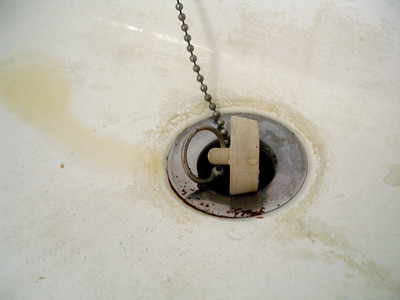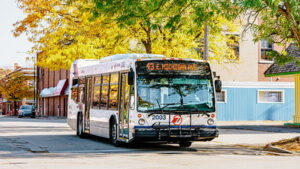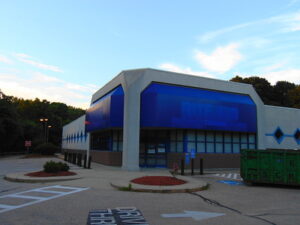Yesterday, I wrote about the three rounds of the Higher Education Emergency Relief Funds (HEERF). You may also know this money as CARES Act funding. Community colleges received specific appropriations from each of these relief acts. WCC got a combined total of approximately $37M.
In the first distribution in 2020, WCC received nearly $5M in aid, half of which had to be distributed to students in the form of direct aid. In September 2020, WCC reported that it had distributed the required $2.48M to students. It also reported that it planned to use a portion of its institutional grant to provide aid to students. According to WCC, it aided about 1,650 students.
Direct aid included cash assistance of between $500 and $1,500, depending upon the student’s enrollment status. In addition, WCC also provided grants to student who returned to complete courses they received an incomplete grade in during the Winter semester. Depending upon the number of courses they completed, student could receive grants between $500 and $1,000.
From the first distribution, WCC also transferred about $250,000 to cover income loss from the closure of the Health and Fitness Center.
HEERF II funding for Washtenaw Community College
In the second distribution of HEERF monies in 2020, WCC received approximately $12M. Unlike the first distribution, where WCC had to split the award at least 50-50, WCC only had to devote as much aid to students as it provided in the first round. In other words, WCC received nearly $12M, but had to spend only about $2.5M on direct aid to students. It distributed these funds based on students’ financial need reported on their FAFSA forms.
WCC completed the required distribution of funds in May 2020. In the second distribution of funds, WCC provided direct assistance to about 1,700 students. According to the reporting, WCC did not elect to spend some of its portion of the grant on student aid. In other words, WCC pocketed $9.4M from HEERF II.
HEERF III funding expenditures for WCC
In the third distribution of HEERF funds (HEERF III), WCC received nearly $21M in aid. Half of these funds, or $10,658,542 must be distributed as direct aid to students. Under the program rules, WCC may keep the remaining 50%. Institutions have more than a year to spend these funds.
In May, the Department of Education presented a briefing on the HEERF III funds, highlighting the changes to program rules. The Department of Education (ED) expects institutions to spend at least some of their institutional grants on emergency aid to students, student retention, reengagement, COVID-19 prevention and mitigation, infrastructure and job loss. The briefing included examples of how institutions were accomplishing this. One of the institutions they highlighted was Grand Rapids Community College.
Here’s what the report said:
“Grand Rapids Community College (Grand Rapids, Michigan) purchased laptops and hot spots, and extended Wi-Fi signals to public library parking lots to reach students in rural areas. Additionally, they directed $3.4 million in CARES Act funds for childcare, housing, and food.
In the Board packet for tomorrow’s Board Meeting, WCC will report that it has transferred $4M from the institutional grant to the General Fund to cover the Health and Fitness Center’s operating losses.
The federal government permits institutions to use HEERF funds to offset revenue losses, so this is allowed. The problem here is that WCC took $4M that could have been used for these other expenses. $4M that could have been used for student aid, student retention, student reengagement, COVID-19 prevention and mitigation, infrastructure improvements or offsetting job losses was redirected to cover the losses on a building that the taxpayers didn’t ask for and didn’t authorize.
Covering the Fitness Center’s losses
Notably, WCC didn’t seek reimbursement for decreased tuition revenues from declining enrollment. They didn’t seek reimbursement for losses from their core business, but they’re using $4M to paper over losses from their side hustle.
The WCC Administration and Board of Trustees have insisted that the Health and Fitness Center is a money-maker. Based on the building’s growing bond debts and its long history of major repairs, it is unlikely that the Health and Fitness Center pays for itself. (It is unlikely that the Health and Fitness Center has ever paid for itself.) The Trustees effectively gambled public funds on the construction and operation of this building.
It’s bad enough that WCC guarantees the repayment of the building’s bond debts with its General Fund, but to take relief funds that could have been used in so many positive ways for this community and use them instead to cover the Trustees’ gambling debts is a shame.
That money could have funded the Children’s Center, new educational programs, or mental health services for students. WCC could have saved the culinary arts program. The funds could have paid for debt cancellation for WCC students who are behind on their student accounts. The money could have paid for COVID-19 testing or vaccination clinics. WCC could have used it to strengthen the custodial and maintenance protocols.
They could have done a lot with $4M. How long will the Trustees allow the Health and Fitness Center to drain resources away from the community?
Photo Credit: Valerie Justice, via Flickr


































